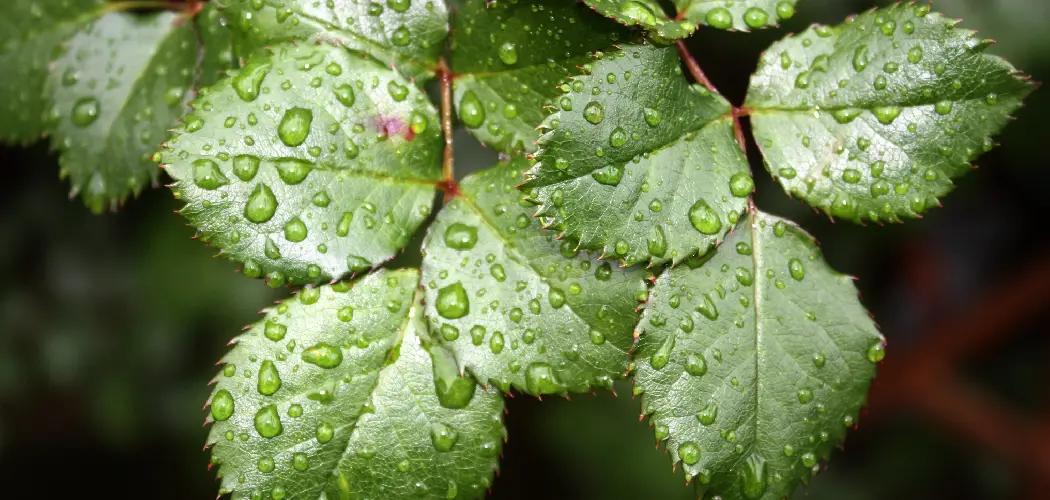
Do you love the beauty and delicacy of rose leaves? Do you want to learn how to make a rose leaf with your own two hands? Crafting a realistic-looking rose leaf may seem daunting, but it is actually quite simple!
In this blog post, we will break down step-by-step instructions on how you can make a beautiful and lifelike rose leaf in no time. Whether you are an experienced craftsman or just starting out, these easy instructions will have you making gorgeous roses in no time. So grab some craft supplies and let’s get started on learning the art of creating amazing rose leaves!
Supplies You Will Need to Make a Rose Leaf
Before starting, gather all the necessary supplies to make a rose leaf:
- Green construction paper
- Scissors
- Pencil
- Green floral tape
- Wire cutters
- Floral wire
- Rose petal template (can be found online or drawn by hand)
Step-by-step Guidelines on How to Make a Rose Leaf
Step 1: Trace the Rose Petal Template
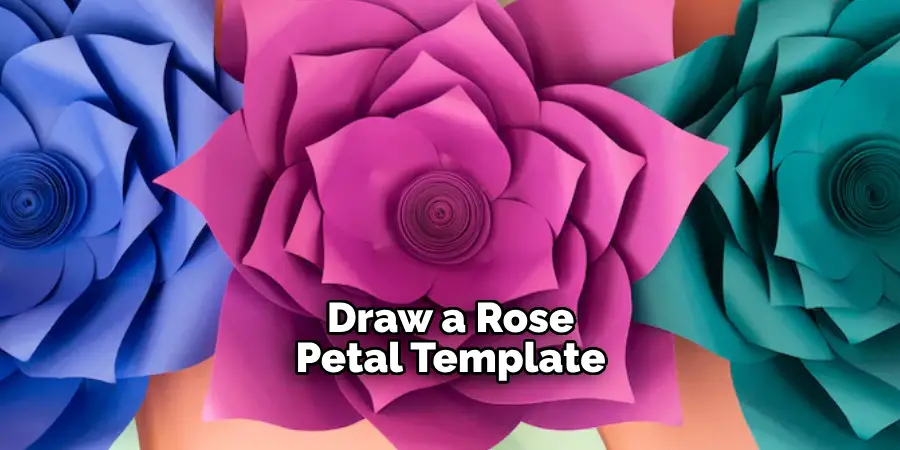
First, print out or draw a rose petal template on a piece of green construction paper. If you are drawing it by hand, make sure to create an elongated teardrop shape with one pointed end and one rounded end. Once you have your template drawn, cut it out from the paper using scissors. This will serve as the base for your rose leaf.
Step 2: Create the Veins of the Rose Leaf
Take your pencil and draw veins on the green construction paper cutout, mimicking the natural veins of a rose leaf. These lines will give your leaf a more realistic touch. You can add as many or as few veins as you desire, but make sure they are all thin and slightly curved. Creating the veins may seem challenging, especially if you are not experienced with drawing, but don’t worry – these lines do not have to be perfect!
Step 3: Cut Out the Leaf
Next, use your scissors to carefully cut out the rose leaf along the pencil lines. This is where having sharp and precise scissors will come in handy. Take your time with this step to ensure a clean and even cut. While cutting, you can slightly curve the leaf to add more dimension and a natural look. If you are not satisfied with your cutout, you can always print or draw another template and try again.
Step 4: Add Texture to the Leaf
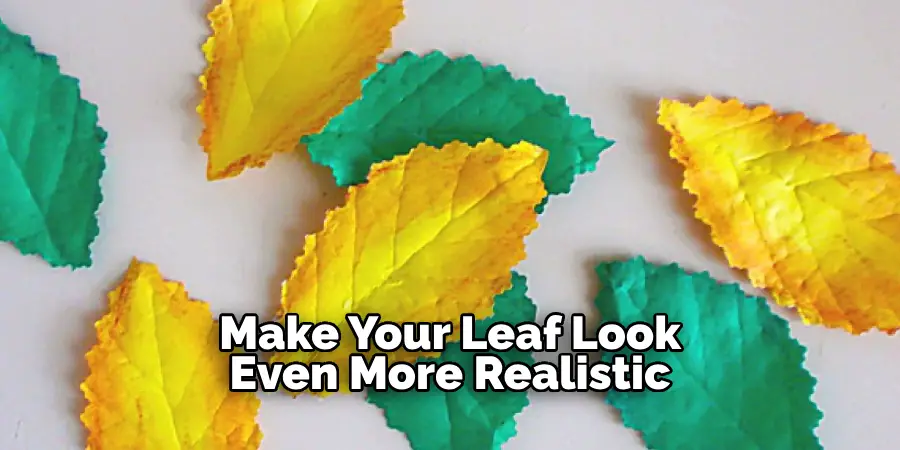
To make your leaf look even more realistic, add some texture by gently crumpling it in your hands. This will give the leaf a slightly wrinkled appearance, just like a real rose leaf. Be careful not to crease the leaf too much as it may lose its shape. Adding texture is optional, but it will make your leaf look more lifelike.
Step 5: Add the Stem to the Leaf
Take a piece of floral wire and cut it to the desired length for your stem using wire cutters. Then, wrap green floral tape around one end of the wire. This will be your leaf’s stem. Place the bottom rounded end of the leaf on top of the taped wire and secure it in place by wrapping more floral tape around it. Make sure to cover all exposed wires with the tape for a seamless look.
Step 6: Finishing Touches
To complete your rose leaf, you can add some additional details like small cuts or tears on the edges to give it an authentic look. You can also use a darker shade of green or some green watercolor to add depth and shadows. Get creative and experiment with different techniques to make your rose leaf truly unique.
Congratulations, you have now successfully made a beautiful rose-leaf! Repeat these steps to create multiple leaves, and soon enough, you will have a bouquet of stunning roses. With practice, you can also play around with different colors and sizes to make a variety of rose leaves. Get creative and have fun!
Additional Tips and Tricks to Make a Rose Leaf
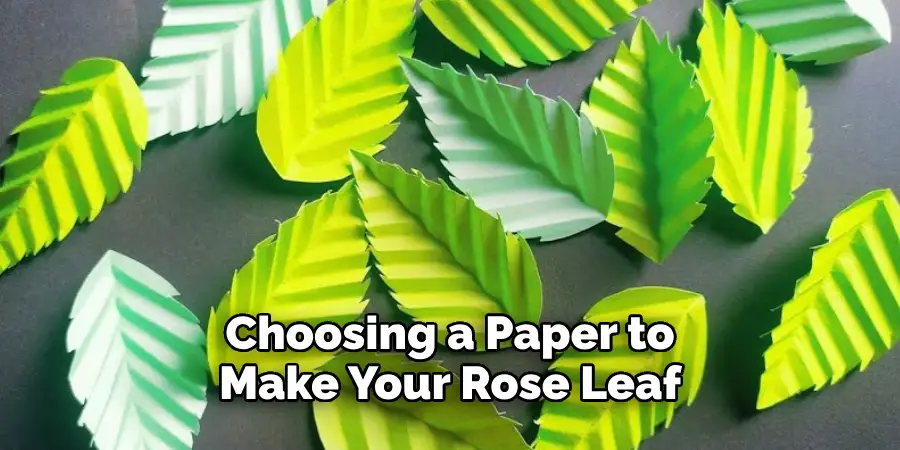
- When choosing a paper to make your rose leaf, opt for thin and pliable materials such as crepe paper or tissue paper. This will allow you to shape the leaf more easily.
- If you are making a large rose, consider using several shades of green paper to give the leaf more depth and dimension.
- To add texture to your rose leaf, crumple the paper lightly before cutting it into shape. This will create a more natural look.
- Use a hot glue gun to attach the leaf to the stem of your rose. This will ensure that it stays securely in place.
- For a more realistic look, use green floral tape to wrap around the stem and secure the leaf in place. This will also add stability to the stem.
- If you want to add veins to your leaf, use a toothpick or small paintbrush dipped in green paint to create thin lines on the paper.
- Don’t be afraid to experiment with different shapes and sizes for your rose leaves. You can make them larger or smaller depending on the size of your rose, or even add multiple leaves for a fuller look.
- Consider using a combination of different green hues for your leaves to create a more realistic and natural appearance.
- For a more delicate and intricate rose leaf, try using thin wire or floral tape to shape the edges of the paper into finer points.
- Practice makes perfect! Don’t get discouraged if your first few attempts at making a rose leaf don’t turn out exactly as you hoped.
Following these tips and tricks will help you create beautiful and realistic rose leaves to complement your paper roses. Remember to have fun and let your creativity shine while making your own unique version of a rose leaf! So, keep experimenting with different techniques to see what works best for you. With practice, you’ll be able to make perfect rose leaves every time. Happy crafting!
Precautions Need to Be Followed for Making a Rose Leaf
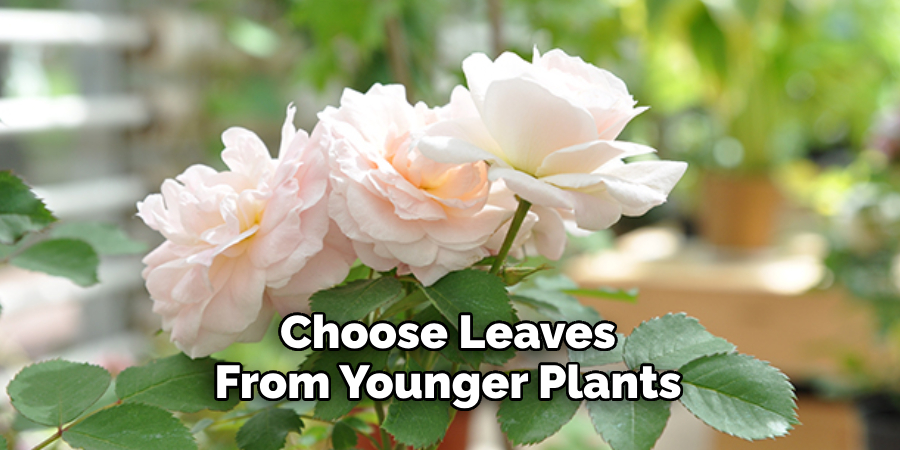
1. First and foremost, you need to ensure that the rose leaves you are using are free from any pest or disease. If there is any infestation, it can affect the final appearance of your rose leaf and can also harm the plant.
2. It is advisable to use fresh leaves for making a rose leaf as they are easier to work with and give better results.
3. Always choose healthy leaves that are not wilted, torn, or damaged. These flaws can make your rose leaf look unattractive and can also make the process more challenging.
4. Ensure that you handle the leaves with care as they are delicate and can tear easily. You may want to wear gloves to protect your hands while handling them.
5. If possible, choose leaves from younger plants as they tend to have a smoother texture, making them easier to work with. Older leaves can be tougher and can make the process more challenging.
6. Avoid using any chemicals or pesticides on the plant from which you are taking the leaves. These substances can leave harmful residues on the leaves and can affect their appearance.
7. It is recommended to use medium-sized leaves for making a rose leaf, as they are easier to fold and manipulate. Large leaves can be more challenging to work with, and small leaves may not give the desired result.
8. Make sure to clean the leaves before using them for making a rose leaf. You can gently wash them with water and pat them dry with a paper towel.
Following these precautions can help you create a beautiful and realistic rose leaf that will enhance the appearance of any craft project or bouquet. Remember to always handle the leaves with care and choose healthy ones for the best results. Happy crafting!
Frequently Asked Questions
Can I Use Different Colors for My Rose Leaves?
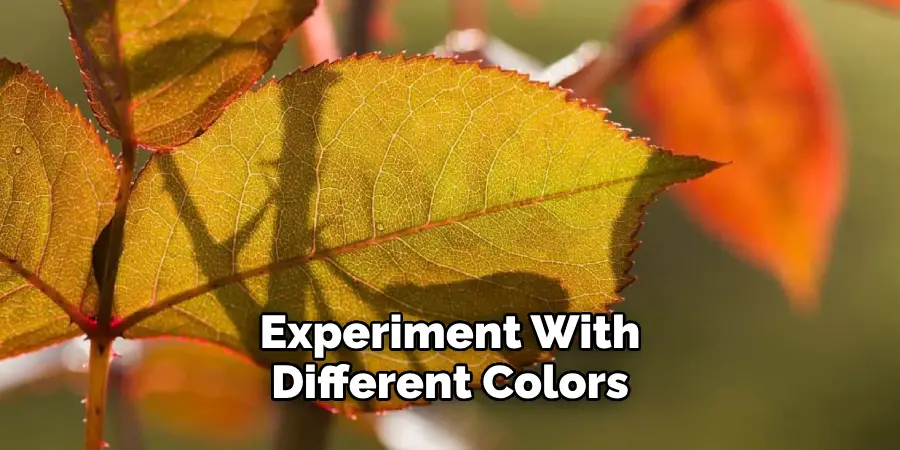
Yes, you can! While green is typically the most commonly used color for rose leaves, you can experiment with different colors to make your roses stand out. The key is to use non-toxic food coloring and mix it with water before painting it onto the leaves. This will give you beautiful, vibrant-colored rose leaves without harming the plant.
How Do I Care for My Rose Leaves?
Caring for your rose leaves is just as important as caring for the rose itself. Make sure to keep them well-watered, but not soaked, and in an area with good air circulation. Avoid getting water on the leaves themselves as this can increase the risk of pests and diseases. Prune any damaged or diseased leaves to promote healthy growth.
Can I Use Artificial Leaves for My Rose Arrangements?
While artificial leaves may seem like a convenient option for creating rose arrangements, they lack the natural and delicate beauty of real rose leaves. Plus, they can detract from the overall appearance of your roses. Stick to using real, fresh rose leaves for the best results.
Are There Any Special Techniques for Making Rose Leaves?
Yes, there are a few techniques you can use to create beautiful and realistic rose leaves. One technique is called “drilling,” where you gently stretch the leaf’s edges to give it a more natural appearance. You can also add veins by using a toothpick or a small brush with green food coloring. Finally, you can spritz the leaves with water before shaping them to create a more lifelike texture.
Conclusion
As we’ve discussed, creating a rose leaf is a simple process and can be used to decorate everything from cakes to book covers. Not only does it add visual appeal to your work, but it is also an economical way to add ornamentation. The steps discussed in this blog post have provided the foundation for creating extraordinary rose leaf endeavors but you must use your imagination and creativity to take them even further.
So don’t let your current skill level limit you from pushing the boundaries of what’s possible; utilize these steps, as well as any others you might come up across, as a means to encourage new levels of expression and artistry. With practice and patience, you’ll soon be crafting impressions of flowers that look so real, that one might almost expect them to experience a sweet essence when smelled! Now that you know how to make a rose leaf, I encourage all readers to give this project a try and display their amazing creations with pride!

